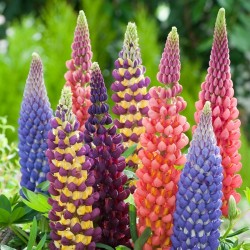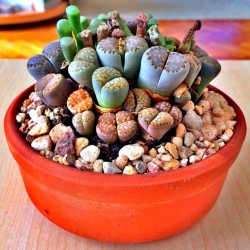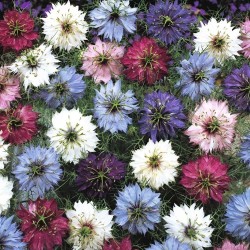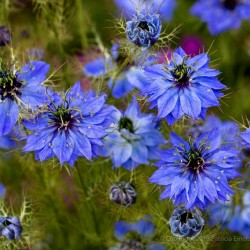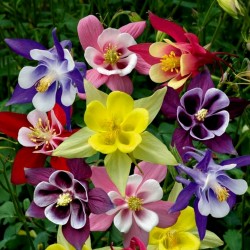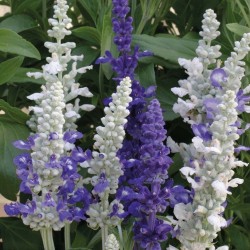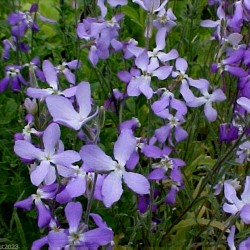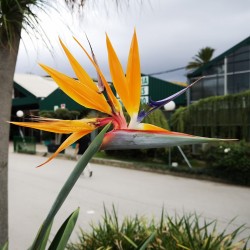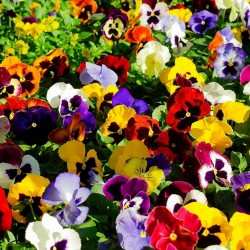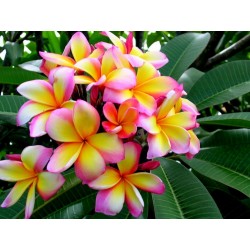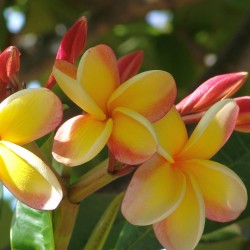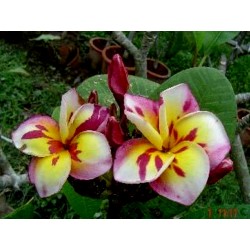Seeds Gallery Com,
5/
5
<!DOCTYPE html>
<html>
<head>
<meta http-equiv="Content-Type" content="text/html; charset=UTF-8" />
</head>
<body>
<h2><strong>Magok Pompás papagájvirág (Strelitzia reginae)</strong></h2>
<h2><span style="color: #ff0000;"><strong>A 3 mag csomagjának ára.</strong></span></h2>
<p>A<span> </span><b>pompás papagájvirág</b><span> </span><i>(Strelitzia reginae)</i><span> </span>az<span> </span>egyszikűek<span> </span><i>(Liliopsida)</i><span> </span>osztályában<span> </span>a<span> </span>gyömbérvirágúak<span> </span><i>(Zingiberales)</i><span> </span>rendjébe<span> </span>tartozó<span> </span>papagájvirág-félék<span> </span><i>(Strelitziaceae)</i><span> </span>családjában<span> </span>a névadó nemzetség legismertebb, sokfelé termesztett<span> </span>faja.</p>
<h2><span class="mw-headline" id="Származása,_elterjedése">Származása, elterjedése</span></h2>
<p>Nemzetségének többi fajával együtt a<span> </span>fokföldi flórabirodalomból<span> </span>származik, de nagyüzemi, szabadföldi termesztésének feltételeit a<span> </span>Kanári-szigeteken<span> </span>alakították ki.</p>
<h2><span id="Megjelen.C3.A9se.2C_fel.C3.A9p.C3.ADt.C3.A9se"></span><span class="mw-headline" id="Megjelenése,_felépítése">Megjelenése, felépítése</span></h2>
<p>Húsos, lédús, 4–6 cm átmérőjű gyökere mélyen behatol az altalajba, és messzire terjed.</p>
<p>Töve elágazó, rövid ízközökkel. Egy-egy elágazásban 5-6 hosszúkás, a banánéra emlékeztető levelet hajt; az idősebb, kifejlett töveken akár 6–8 elágazás is lehet. Levélnyele hosszú. A levéllemez viaszos, kékes- vagy szürkészöld, 40–60 cm hosszú, vállban 8–20 cm széles, a csúcsa elkeskenyedik, főere jól fejlett.</p>
<p>Virágai virágzatban egyesülnek. Ezt egy 70–100 cm hosszú, hengeres, szárszerű képlet tartja — ez tulajdonképpen a levélhüvely. Ez a levélhüvely a virágzat csúcsán elhajlik, és csónakszerű buroklevélként azt kinyílás előtt védi, utána pedig tartja. A virágok (5-6, esetleg több) a buroklevelekben fejlődnek ki. Egyenként, egymás után nyílnak, és derékszögben meghajlított állapotukból egyenesednek ki. A különleges, madárfejre emlékeztető virágok szirmai dárda formájúak, ragyogó narancssárgák, illetve sötétkékek. Egy-egy virágszár a megtermékenyítés után 1–3 magtokot nevel.</p>
<h2><span class="mw-headline" id="Életmódja,_termőhelye">Életmódja, termőhelye</span></h2>
<p>Hosszú életű, erőteljesen fejlődő növény. Sok tápanyagot és savanyú talajt igényel. Kedveli a meleget és a napfényt, de a tűző naptól és a széltől óvni kell. + 10 °C felett átteleltethető, de folyamatosan virágzásához magasabb hőmérséklet ajánlott. Az átültetést rosszul tűri, mert ilyenkor a húsos gyökerek könnyen törnek.</p>
<p>A szárazságot jól viseli, de gyorsan csak nedves talajban fejlődik.</p>
<p>Sokáig virágzik. A magyar növényházakban egy őszi – tél eleji és egy tavaszi – nyár eleji periódusa alakult ki. Minden új virágzat megjelenése előtt egy új levelet is hajt. Egy-egy levele 6–8 évig él.</p>
<p>Természetes élőhelyén 2-3 évesen hozza első virágait.</p>
<h2><span class="mw-headline" id="Felhasználása">Felhasználása</span></h2>
<p>Az<span> </span>orchideák<span> </span>után az egyik legjellegzetesebb extra vágott virág. Mérete, feltűnő formája, virágszíne, valamint tartóssága miatt értékes. Vágott virágnak csak a<span> </span><i>Strelitzia reginae multiflorát</i><span> </span>termesztik. A magoncokat a második évtől válogatják. A rövidebb levélnyelű, nagy vállú, széles levéllemezű, pirosas főerű egyedek hozama a legjobb.</p>
<h2>Sowing: </h2>
<p>Sow indoors at any time of year.</p>
<p>Before sowing, remove the bright orange tuft of hairs attached to the seed (aril of each seed), the hard seeds can be scarified (nicked or scratched) to decrease germinate. To scarify, soak the seeds in lukewarm water for several hours, and then nick them with a knife or small file. Scarified seeds will germinate in two to three months.</p>
<p>Another way to decrease germination time is to put un-scarified seeds in a plastic bag and place them in a refrigerator at 4°C (40°F) for two weeks. Then scarify and sow them.</p>
<p>Sow in seed trays filled with a well-drained soil medium at a depth of 1.25cm (½”)</p>
<p>Keep at a constant temperature of 25°C (77°F) low temperatures retard germination. Germination takes four to eight weeks.</p>
<p>The soil mix must be kept consistently damp until the seeds germinate. To ensure a moist, humid environment, cover the seed container with a sheet of glass or clear plastic and place it in indirect light.</p>
<p>Seedlings should be a good size before transplanted (two to three leaves) into a well-drained medium. Young strelitzia plants must be grown in shade, for the leaves tend to burn in direct sunlight. Regular repotting allows the young plant to develop rapidly. Restricting the root development of retards growth.</p>
<h3>Cultivation: </h3>
<p>Strelitzia nicolai is an easy plant to grow in the garden. Plants do well in full sun to semi-shade, love rich loamy soil and plenty of water throughout the year. They respond well to regular feeding with a slow-release fertilizer and compost. They are very tolerant plants and will thrive in most soils and can survive with very little water once established. They are also wind resistant and grow well in coastal gardens.</p>
<p>Strelitzias are sensitive to cold and in areas with frosts would need a sheltered position. In cold climates, it is better to grow them in pots that could be moved indoors when frosts are expected. As soon as the frosts finish for the winter, you may place the plant outside in a sheltered south-facing the garden. They tend to do well when temperatures do not drop below 10°C (50°F) and do very well in a greenhouse/conservatory.</p>
<h3>Tips for growing strelitzia in a temperate climate: </h3>
<p>Overwintering - One of the main points with exotic plants is to avoid frost. Keep in a warm, well-lit area. Stop feeding the plants to allow them to become dormant. Do not overwater in the dormant season/winter. Wet soil is cold soil.</p>
<p>Springtime: - Feed the plant well once growth starts again. Feed regularly throughout the growing season but do not over-feed otherwise your plants will just grow foliage and no flowers.</p>
<h3>Flowering: </h3>
<p>From seed, plants given ideal conditions will flower within 3 years. To get a mature flowering plant from seed takes about three to five years.</p>
<p>They usually start to come into flower at Christmas time and sometimes later in the summer months. The flower spikes take a few months to grow full size, but then open gradually, taking a few weeks, to a few months to open up to reveal their famous flowers</p>
<h3>Watering: </h3>
<p>The bird of paradise plant should be watered thoroughly but then allowed to dry out almost completely before re-watering. They don’t like to be over-watered, and in the rest period (winter) they should only be watered when the soil is almost completely bone dry. When growing begins in the Spring they should be given phostrogen feed once every two weeks, to encourage new growth.</p>
<h3>Feeding: </h3>
<p>During the summer months, Strelitzia requires as much sunlight and ventilation as possible. Feed once a week with a phostrogen feed to help encourage new leaves and flower spikes.</p>
<h3>Potting: </h3>
<p>As soon as the roots start to stretch the pot wider, it would then be wise to pot the plant up into the next size pot. They tend to do very well in a loam-based compost with either grit or bark chippings to aid drainage. The optimum pH is 6.5.</p>
</body>
</html>
F 1




